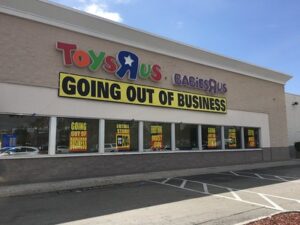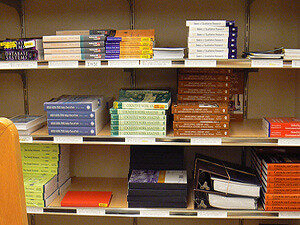- Define the term business
- Distinguish between goods and services
- Distinguish between profit, loss, and value
- Understand the difference between for-profit and nonprofit businesses
Today’s Business Environment

The world of business today can be summed up in two words: rapid change. In order to remain profitable and competitive, businesses are finding that they need to be more responsive than ever to customers’ needs. This is not only true of big companies like Apple, Nike, and Whole Foods, but of smaller businesses, too—like your local hardware or grocery store. The rapidly changing business environment affects them all.
What is the business environment? In some ways, it resembles the natural environment in which we live: it’s all around us, but not always noticeable. It includes things like technology, competitors (other businesses), advertising, regulations, consumer demands, and money. When these elements of the business environment change—in the same way that seasons and weather change—companies need to be able to predict, react, and adapt accordingly. Those who fail to do so may find themselves out in the rain or cold and struggling to survive.

Although the environment in which businesses operate is always changing, the accelerated pace of change presents special challenges and opportunities for businesses today. To get a sense of this rapid and dramatic change, consider something that’s a part of every college student’s life: buying course materials. A couple of decades ago, your only option would have been to go to the college bookstore. You would have purchased either a new or used physical textbook and you might have also bought some supplies like pens and notebooks. You may have even selected a sweatshirt with the name and logo of your college. When you got to the cash register, you probably paid in cash or wrote a check. The bookstore was open for normal business hours—Monday through Friday, 9:00 a.m.–5:00 p.m., and possibly for the morning on Saturdays.
What about now? This courseware you are using for this class doesn’t even have a physical form. Your payment for it was likely electronic rather than paid in cash or check. You might have other classes that require a textbook but since store hours aren’t convenient during the workday, you might have gone online to use the bookstore’s website or another internet seller such as Amazon to buy or rent physical or even ebooks for your other classes, paying electronically with a credit card or an electronic payment service like Venmo. You never set foot inside the store.
You can see from this example that the way companies “do business” is very different today compared to several years ago. Some of these changes are the result of developments in technology, while others are the result of shifting consumer demands and trends. Regardless of the particular cause, though, all businesses have to cope with the changing nature and pressures of the business environment. A large part of this course will focus on the ways in which they do just that.
business
A business is any person or organization that provides goods or services to consumers for the purpose of making a profit. Goods are tangible items, such as cars, televisions, or soda. A service is an action or work performed for payment. Services include things like haircuts, hotel stays, or roller-coaster rides.